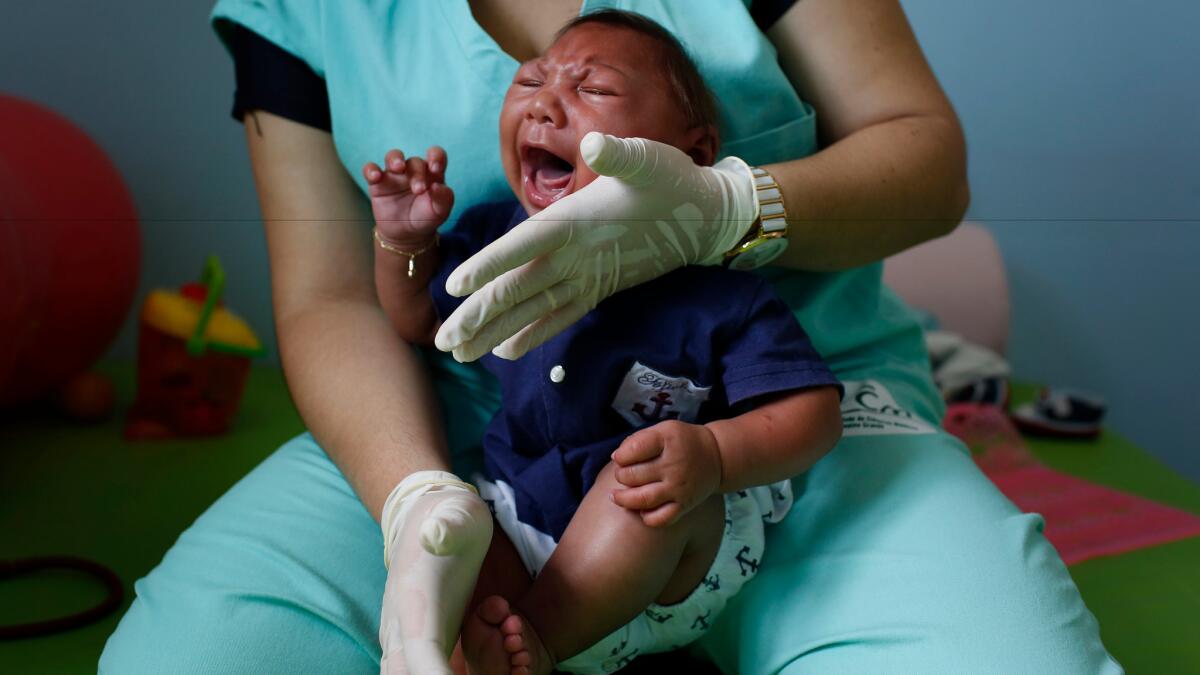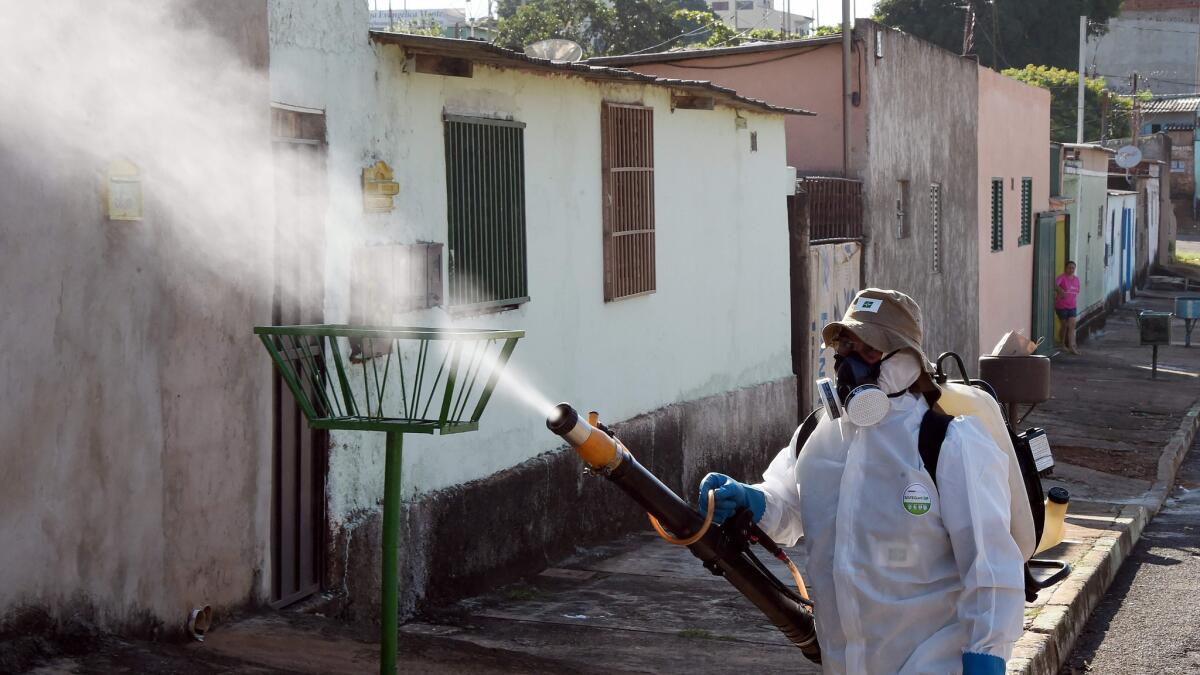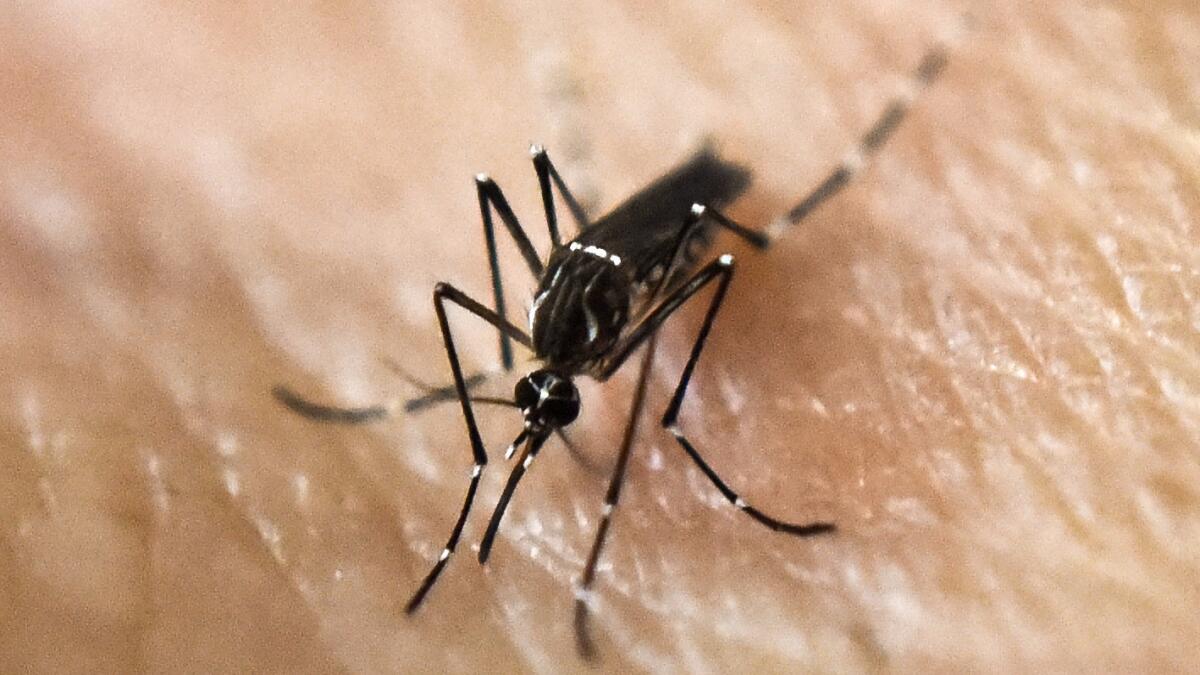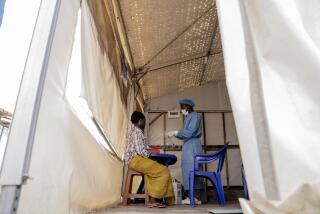Zika’s unrelenting march across the Americas: ‘An emergency that we need to address’

- Share via
In the six months since Zika was declared a global public health emergency, the virus has continued its unrelenting march across the Americas, spreading to more than 40 countries and territories and stirring panic among pregnant women and their families.
On Friday, the Centers for Disease Control and Prevention said four patients in Florida were probably infected with Zika by local Aedes species mosquitoes — the first evidence of mosquito-borne transmission in the continental United States. The virus, which can also be spread sexually, was already circulating in the U.S. territories of Puerto Rico, American Samoa and the U.S. Virgin Islands.
Zika was long thought to be relatively harmless. The symptoms, which can include fever and rashes, are generally mild, and most of those infected do not feel ill.
The World Health Organization sounded the alarm Feb. 1 after Brazil reported a surge in the number of babies born with microcephaly — an abnormally small head — and brain damage that appeared to be linked to the virus. The WHO and CDC have since confirmed that Zika infections in pregnant women can cause serious harm to their fetuses.
The virus is not generally considered dangerous to people who aren’t pregnant. But in rare cases, it has been linked to Guillain-Barre syndrome, an immune system disorder that can cause temporary paralysis.
The discoveries, WHO Director-General Dr. Margaret Chan said in February, changed the risk profile of Zika from a mild threat to one of “alarming proportions.”
Researchers now say that the epidemic may already have peaked in Latin America and could be largely over in three years. Scientific teams are studying several promising vaccine candidates.
However, the release of a vaccine that is safe for humans could still be years away. Without such protection, CDC Director Dr. Thomas Frieden warned in June, the virus remains “an emergency that we need to address.”
Here is a look at Zika’s toll by the numbers:
1,638: The number of confirmed cases of microcephaly and other neurological defects in Brazil that could be due to a congenital Zika infection.
The country’s health authorities are investigating reports of 3,061 more cases and have discarded 3,466 cases that were misdiagnosed.
14: The number of countries and territories that have reported births with malformations that could be due to Zika.
In the United States, there have been 12 such births, and six fetuses had defects so severe that they died in utero.

15: The number of Zika-affected countries that have reported an increase in the incidence of Guillain-Barre syndrome and/or have confirmed Zika infections among such cases.
64: The number of countries and territories worldwide that have reported evidence of mosquito-borne transmission of Zika to the WHO since 2015.
They include the U.S. territories of Puerto Rico, American Samoa and the U.S. Virgin Islands, which have reported more than 4,700 cases among them.

11: The number of countries and territories with evidence of person-to-person transmission of the virus.
In most of these cases, the virus appears to have been transmitted sexually. However, a case has emerged in Utah that health officials have not yet been able to explain.
The person is related to an elderly Zika patient who died in July, but there was no sexual contact between them, and the person had not recently traveled to an area with active Zika transmission.
There was also one case in the U.S. where a laboratory worker was infected as a result of a needle-stick injury.
Twitter: @alexzavis
On the frontline of Brazil’s war with Zika, a mother’s first question: ‘How big is the head?’
Why the Rio Olympics are not likely to increase the spread of Zika across the world
Chasing an epidemic: On the road with Brazil’s Zika detectives
More to Read
Sign up for Essential California
The most important California stories and recommendations in your inbox every morning.
You may occasionally receive promotional content from the Los Angeles Times.










